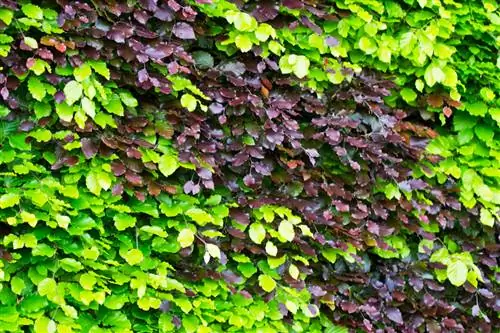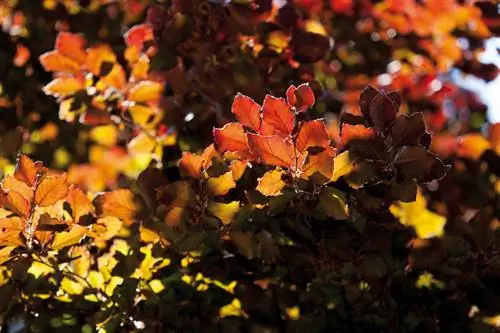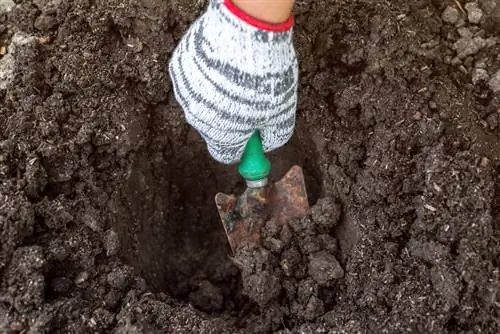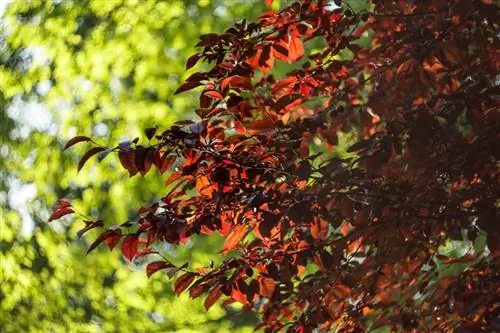- Author admin [email protected].
- Public 2023-12-16 16:46.
- Last modified 2025-01-23 11:20.
The question of whether a red beech hedge or a hornbeam hedge should be planted in the garden cannot be answered easily. Both trees only differ from each other in a few points. Ultimately, the location and your own taste decide.

Should I plant a red beech hedge or a hornbeam hedge?
Common beech hedges prefer sunny, moist locations and offer intensely orange autumn foliage. Hornbeam hedges are more site-tolerant, non-toxic and have deeper roots that are better suited to planting near walls or utility lines. Choose depending on your location and personal preferences.
Common beech hedges are more picky when it comes to location
Common beeches are more picky than hornbeams when it comes to location. The hornbeam is not a beech tree, but is a birch tree.
Common beech hedges prefer one:
- sunny or partially shaded place
- slightly moist location without waterlogging
- not too much draft
while a hornbeam hedge can also cope with shady areas.
A hornbeam hedge can tolerate short dry periods because it has much deeper roots. It can even be planted on slopes.
The planting distance from houses and sidewalks
An important criterion is the planting distance of the hedge from walls, houses or sidewalks. European beeches are shallow-rooted trees that form very strong roots. They can damage the masonry or lift paving slabs. Under no circumstances should they be planted near utility lines because they will burst the pipes.
You can plant a hornbeam hedge close to walls or roads. The heart root penetrates deep into the earth and therefore poses no danger to supply lines, masonry or paving slabs.
Beech trees are poisonous, hornbeams are not
An important point when choosing is the toxicity of the plants. This is particularly important if children or animals live in the house.
Beech trees, especially beech nuts, contain toxins that can cause mild symptoms of poisoning.
The hornbeam is completely non-toxic. It can also be planted in horse pastures or in kindergartens without any concerns.
The difference in leaf color
In spring and summer, common beech hedges and hornbeam hedges hardly differ in leaf color.
The autumn leaves, however, are different. European beech leaves turn bright orange, while hornbeam leaves turn yellow.
Both trees make good hedges
Both common beech hedges and hornbeam hedges provide good privacy protection, as some of the leaves of the deciduous trees remain on the trees until the next spring.
Both types of hedges need to be trimmed twice a year.
Tip
Common beeches prefer a mild climate. If the weather is harsher where you are, you should plant a hornbeam hedge instead.






